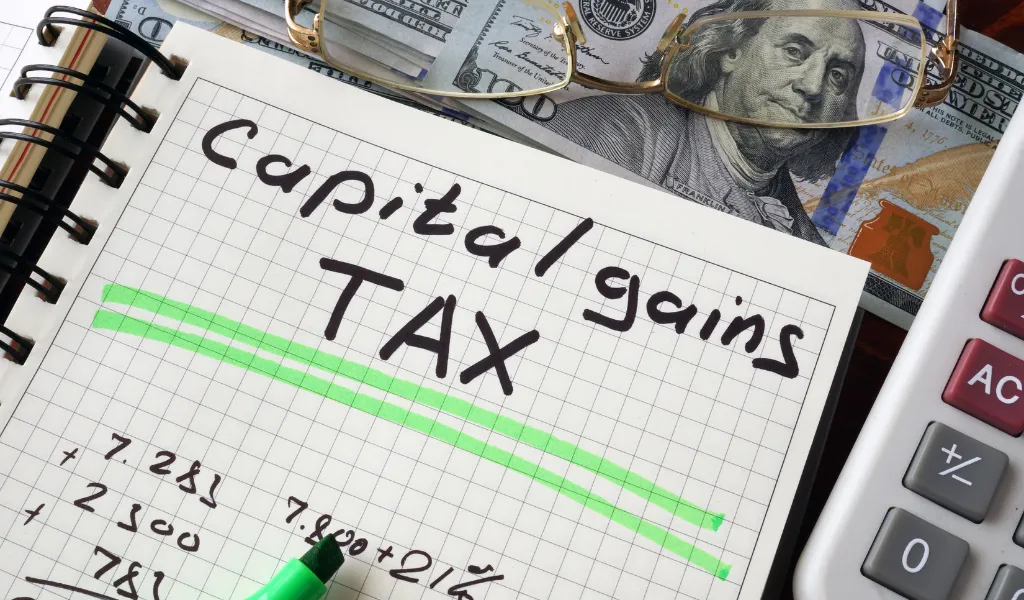As the director of a company, you can borrow money from one. It is an excellent way to access funds. When it comes to taking out a loan from a company, you should know the rules governing it. There are a lot of complexities that can come your way. However, you can navigate them if you understand how a director’s loan works and its tax implications. If you decide to resign as a director, then you should know the impact it has on your loan. This guide covers everything you need to know about the implication on a Director’s Loan Account when director leaves.
First, let’s discuss the definition of a director’s loan. Then, we can move on to more complex matters.

What is a Director’s Loan?
When a financial transaction that is not a dividend, salary, or expense repayment takes place between a company and its director, it is called a director’s loan. Specific tax legislation governs these loans in the UK. Furthermore, they require record-keeping. When a director borrows money from the company or they lend funds to the company, it is a director’s loan.
Types of Director’s Loans
Following are the two kinds of director’s loans available:
When Director Owes Money to the Company
In this type of loan, the director borrows money from their company. Then, they must return the loan within a specific period. Otherwise, there are tax implications.
When Director Lends Money to the Company
In this scenario, the director is the one lending money to the company. Thus, they can withdraw it any time they want to. There are no Corporation Tax implications in this case.
What is Director’s Loan Account (DLA)?
A financial record that keeps track of transactions between the directors and their company is called a director’s loan account. It includes all the money that you borrow or lend. Since it represents all the data of the flow of funds between the two parties, it is like a ledger.
Suppose you, the director, take money from your company for personal reasons. Then, it is recorded as a withdrawal or debit in the DLA. When you lend money to the company, then it is recorded as a loan or credit in the DLA. So, what happens to a Director’s Loan Account when director leaves?
Through the director’s loan account, you can maintain a valid record of your financial transactions. Therefore, this can provide accountability and transparency within the company. The company can keep track of any amount due to you or by you. This includes any interest charges that apply to the loan.
For both tax and legal purposes, this account is essential. It can assist in evaluating your financial position within the company. Furthermore, it can assess any benefits or tax liabilities that come with the loan transactions. To meet regulatory and legal criteria, it is necessary to have an accurate recording of transactions and proper documentation.

What Purpose Does a Director’s Loan Account Serve?
As a director, you can use your loan account for various purposes, such as the following:
To Enable Personal Cash Flow
Through a director’s loan account, you can withdraw funds from the company. You can use these to cover your personal investments, expenses, or any other financial obligations.
To Inject Funds into the Company
You can also provide funds or capital to the company. By lending money, you can support certain projects.
For Tax Planning
If you use your DLA account strategically, then you can manage corporate and personal tax liabilities. Then, what are the implications on a Director’s Loan Account when director leaves?
By comprehending the motivations behind the use of director’s loan accounts, directors and companies can make informed financial decisions that align with their objectives.
Advantages of a Director’s Loan Account
Following are the benefits of having a DLA:
Access to Funds
One of the benefits of maintaining a DLA is that they offer flexibility. You can access funds as per your needs. Therefore, they are a source of liquidity for both business and personal matters.
Effective Cash Management
By using a DLA, you can separate business finances from personal finances in an effective manner. It is a simplified way for financial tracking and reporting.
Opportunity to Charge Interest
If you lend money to the company, you can charge interest on the loan. You can enhance your overall financial returns by earning interest.
Tax Benefits
Depending on your situation, you can gain tax benefits by using a DLA. For example, you can optimise corporate tax strategies or manage personal tax liabilities.
More Accountability and Clarity
Through a director’s loan account, you can guarantee clear documentation of transactions. This promotes accountability and clarity within the company. Then, what happens to a Director’s Loan Account when director leaves?
What is an Overdrawn Directors’ Loan Account?
Simply put, when you take a loan from a company and do not repay it, you have an overdrawn director’s loan account.
Any money you take from the company is subject to scrutiny because a limited company is a separate legal entity. A DLA keeps a record of the transactions that take place between you and the company. Following are the possible outcomes of the transactions:
- The DLA will not have any balance if you do not take any money from the company. This excludes salary and dividends.
- Account will show credit and the company will owe you money if you give personal funds to it. For example, fund for purchasing equipment or assets.
- If you take a loan from the company, then you need to repay it and your account will show debit.
Even if your director’s loan is in debt, it is not an issue. You can repay the balance within nine months of the end of the accounting period. However, it is an issue after those nine months of the company’s year-end. The situation worsens if the business goes into loss or faces insolvency. This will create an overdrawn director’s loan account. So, what is the impact on a Director’s Loan Account when director leaves?
There are serious tax implications of not paying your director’s loan. In case you have an overdrawn DLA in an insolvent company, then you face severe personal liability issues.
Is it Possible to Write-Off a Director’s Loan Account?
Under certain circumstances, it is a possibility to write off your director’s loan account. The company can do so if they can show that the loan is not recoverable. They must prove that there is no realistic expectation of repayment of the loan. Nevertheless, make sure to follow proper accounting procedures and comply with the legal requirements.
Please note that even if the company writes off the director’s loan account, the director is still under obligation to make the repayment. Writing off the loan only indicates the loan’s accounting treatment in the financial records of the company.
Director’s Loan Account on Director’s Resignation
If you, the director, decide to give your resignation, it certainly causes worry regarding your Director’s Loan Account. It is important to comprehend the implications of your resignation on your DLA regardless of the company’s liquidation.
What Happens to a Director’s Loan Account When Director Leaves?
Unless you repay it or settle it, your Director’s Loan Account remains in place when you leave the company. Your resignation does not absolve you of your obligation to make the repayment. Therefore, it is going to remain your liability until you can repay it or resolve it through a proper agreement.
Even if your company is going through liquidation, you can still resign. It is important to understand that your resignation will not suspend or pause the liquidation process. The process will continue, and the liquidator will factor in your Director’s Loan account in the overall winding-up process.
What is the Liability of the Director After Resignation?
Even if you resign as a director, you are still liable for your director’s loan account. As a director, you have legal obligations and fiduciary duties for your company. These include your responsibility to make repayments for any unpaid loans. It is important to understand the implications on a Director’s Loan Account when director leaves.
The liquidator can still pursue you for recovery of the loan amount if you fail to repay after your resignation. To enforce repayment or even negotiate a settlement, the liquidator has the right to take legal action against you. The settlement is based on your financial circumstances.
It is crucial for you to understand that your obligations in terms of your DLA persist even after you resign. You should seek expert advice to fully comprehend the implications of your resignation on the loan account. Also, you need to have an open conversation with the liquidator. This way, you can manage any outstanding loans efficiently.
How to Manage a Director’s Loan Account Effectively
To ensure you comply with legal obligations and reduce potential complications, you must manage a DLA effectively. It is important to remain proactive when dealing with your loan account. Remember to reach out for expert advice, as it will help you navigate the complex matter.
Following are the ideal practices for managing a Directors Loan Account as effectively as possible:
Maintaining Accurate Documentation
To effectively manage your DLA, you must maintain accurate records of every transaction that relates to it. Also, you need to keep track of loan agreements and repayments. In case you make any adjustments to the loan balance, then keep track of those as well.
Ensuring Just and Commercial Terms
It is your responsibility to make sure that any loan transactions with the company are taking place on fair and commercial terms. This way, you will avoid potential legal issues by demonstrating transparency. Therefore, you should know what happens to a Director’s Loan Account when director leaves.
Repaying the Loan Without Delay
You should put in the effort to repay the loan as soon as possible and according to the agreed-upon terms. By doing so, you can maintain a healthy financial relationship with the company.
Getting Expert Advice
When faced with complexities or uncertainties regarding the Directors Loan Account, it is advisable to seek professional advice from accountants, insolvency practitioners, or legal experts who specialise in company law and liquidation.
Can You Transfer a Director’s Loan Account?
You can consider transferring your loan account to another person or a legal entity in specific cases. If you are going to transfer, then you must do so by adhering to the relevant regulations. Also, you need to provide proper legal documentation. Moreover, you need to consult with experts to make sure you comply with the tax implications and legal requirements of the transfer. Thus, you should comprehend what happens to a Director’s Loan Account when director leaves.
What Should You Do When You Cannot Repay a Director’s Loan?
It is crucial that you address the situation transparently and immediately if you cannot repay the loan account. With the help of expert advice, you can explore the options available to you. For example, renegotiation of the terms, creating a repayment plan, and pursuing a settlement arrangement.
Since failure to deal with outstanding loan amounts has legal consequences, you should remain proactive in finding a resolution. Also, it affects your personal financial position.
If you follow ideal practices, get expert advice, and remain proactive in managing your DLA, you can navigate challenges. More importantly, you can ensure compliance with financial and legal obligations.
What is Creditors Voluntary Liquidation?
When a company is insolvent and cannot pay off its debts, it can go through the process of Creditors Voluntary Liquidation (CVL). Through it, you can wind up the company’s affairs in an orderly way. It maximises asset realisation and distribution of funds to creditors.
The directors and shareholders of the company usually initiate a CVL. They do so when they realise that the company’s financial position is such that it cannot continue its operations. When they arrive at this decision, they do so by keeping the best interests of the company’s creditors in mind. Their aim is to minimise their financial losses as much as possible. Now, you know what happens to a Director’s Loan Account when director leaves.
To proceed with a CVL, it is necessary to appoint a licensed insolvency practitioner as the liquidator. They will oversee the entire process. It is their responsibility to scrutinise the company’s affairs, sell assets, and perform a fair distribution of the proceeds. The creditors will receive the proceeds from the sale of assets. Not only this, but the liquidator also makes sure to comply with legal requirements. It is their duty to deal with the required paperwork of the liquidation process.
What are Steps and Implications of Creditors Voluntary Liquidation?
A CVL process involves the following implications and steps:
Meeting of Creditors
To discuss the company’s financial situation and review the proposal of liquidation, the company’s creditors must hold a meeting. They also need to appoint a liquidator to oversee the process. It is the right of the creditors to cast a vote when appointing the liquidator. They can also decide matters during the liquidation process. Therefore, it is crucial to understand what happens to a Director’s Loan Account when director leaves.
Realisation of Company’s Assets
The next step is identification and evaluation of the company’s assets by the liquidator. Assets include equipment, property, and inventory. They also include intangible assets. For example, goodwill and intellectual property. Then, the liquidator will liquidate or sell the assets to generate proceeds or funds. Which they must distribute to creditors.
Claims by Creditors
Creditors can approach the liquidator to make their claims. They must give details of the amounts that the company owes to them. Before distributing the proceeds, the liquidator must review these claims and verify if they are valid.
Distribution of Proceeds to the Creditors
The final step after liquidation of assets is to distribute the funds to the creditors according to the statutory order of priority. This is the responsibility of the liquidator. Please note that secured creditors are given priority over unsecured creditors. Secured creditors are those who have mortgage or valid charges over certain assets. Hence, you must know what happens to a Director’s Loan Account when director leaves.
Undoubtedly, a CVL is a transparent and orderly process. It factors in the best interests of both the creditors and the company. Moreover, it offers a structured method to resolve the financial difficulties of the company and eventually gives closure to its operations.
Conclusion
To conclude, as the director of a company, you can take out a loan. Then, you can set up a Director’s Loan Account. A DLA serves various purposes. Not to mention that there are plenty of advantages of having a DLA. You should know how to manage a loan account effectively. Furthermore, you should know what to do if you cannot repay the loan. If you resign as the director, you are still liable to repay the loan. It is always best to reach out for expert advice before taking any step. Please ensure compliance with legal requirements.








